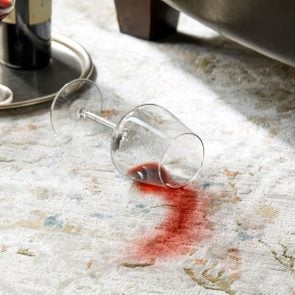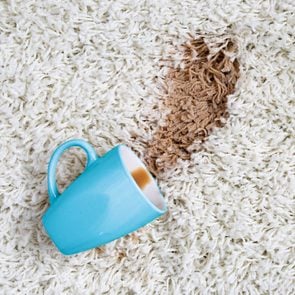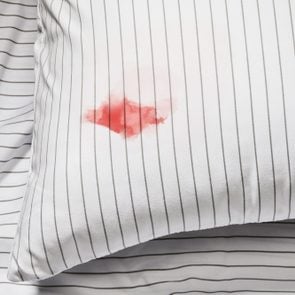How to Get Sticker Residue Off Anything, According to Cleaning Experts
Updated: Apr. 19, 2024
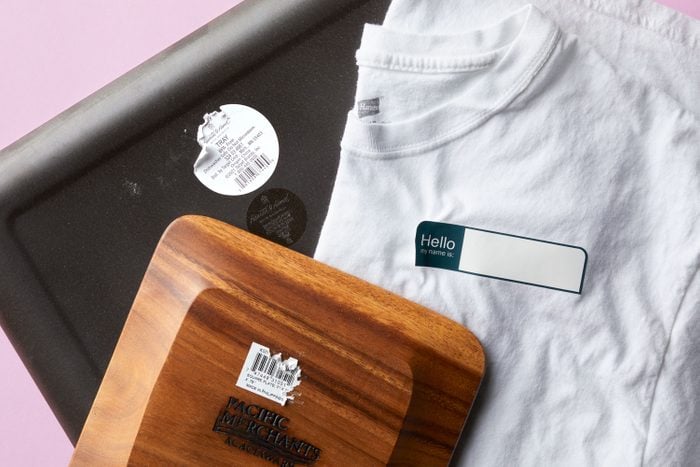
The bad news? Stickers leave behind residue. The good news? Follow these expert tips to remove sticker residue and your item will look brand new again!
We’ve all been there: You carefully peel back a sticker or sticky label, hoping for a clean removal, but it leaves behind that dreaded, impossible-to-remove sticker residue. Darn it! Windows, wine glasses, cookware and even clothing—sticker residue is the “bane of pristine surfaces everywhere,” says Mattie Sheppard, the strategic interior design and cleaning advisor for Real Estate Bees and founder of Perfectly Pictured Decluttering and Staging Experts. With more than 13 years of professional cleaning experience, Sheppard has seen her fair share of stuck-on gunk, and she knows how to get sticker residue off nearly anything.
Reader’s Digest talked to Sheppard and Dan Deonarain, owner of Galaxy Maids, a New York City–based residential and commercial cleaning company, to learn their proven cleaning techniques for getting rid of the sticky stuff. “The most important consideration is the surface that the sticky residue is on,” Deonarain says. What works for glass will be different than clothing or wood. And even though it seems like you’ll need industrial-strength chemicals, “there’s an arsenal of DIY remedies that prove just as effective, if not more,” Sheppard adds. In fact, you can remove sticker residue with many of the same common materials you use to get rid of other types of stains. Here’s how.
Get Reader’s Digest’s Read Up newsletter for more cleaning, tech, travel, humor and fun facts all week long.
About the experts
Reviewed for accuracy by: Ann Russell, TikTok’s “cleaning auntie” and the author of How to Clean Everything. |
How to get sticker residue off with a scraper
There are many ways to get rid of gummy sticker remnants, but the “easiest way to remove sticky residues is to scrape them off,” according to Deonarain. But make sure to use a plastic tool, like a credit card or a plastic scraper—not anything made from metal. “You stand the risk of damaging the surface with a metal scraper,” Deonarain says. To make the scraping easier, add a drop of dish soap, or soak the item (material dependent) in warm soapy water.
How to remove sticker residue that won’t budge
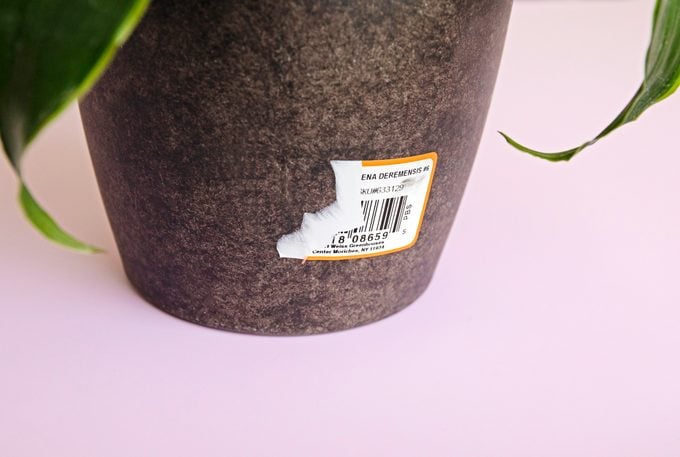
“If using just the plastic scraper does not remove the residue, there are a few solvents commonly around the house that can be helpful,” Deonarain says. Solvents? That sounds serious. Will these things damage your stuff? Not if you’re mindful of where the sticker’s stuck. “At Galaxy Maids, we always first apply the solvent to a small spot, ideally the underside or similar area out of direct sight,” Deonarain says. If your test run looks good, it’s OK to use that method to remove the sticker.
Hair-dryer
Applying heat is the safest method to remove sticker residue. This is because gently warming the glue is unlikely to cause harm to the sticker or substrate, so if this method doesn’t work, you are no worse off.
Here’s how to do it, according to Sheppard: Using a hair-dryer or heat gun on a low setting, warm the sticker residue to soften it. Then, slide a plastic scraper underneath, or gently peel it back with your fingers. This method works on surfaces that can stand a bit of heat, but Sheppard says to keep an eye on things at all times to avoid “unintended consequences” like scorching. Use the lowest setting and the shortest amount of time needed to soften the sticker, and check the surface frequently.
Oils
Here’s a gentle, effective sticker remover you have right in your pantry. “Whether it’s vegetable, olive or coconut oil, these kitchen staples serve as natural solvents,” Sheppard says. “The oils seep into the adhesive, loosening its grip and allowing for easy removal.”
One important note: Because oils seep, don’t use this method on clothing or unfinished wood, or you’ll end up with a sticker-free oil stain. But for smooth, oil-safe surfaces like glass, plastic and finished wood, dab oil onto the sticky residue, and let it sit until softened. Wipe or gently scrape away the residue, and then wash the area with warm soapy water or polish the wood to a high shine.
Toothpaste
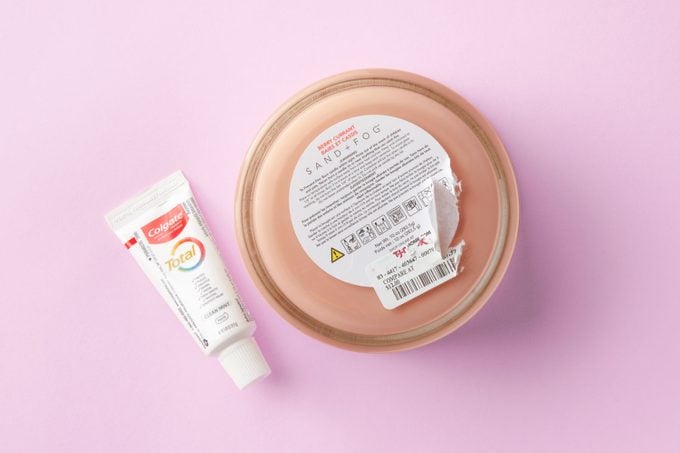
Toothpaste may seem like an unlikely solution to get rid of sticky residue, but it works. Mildly abrasive yet gentle, it’s an excellent DIY alternative to harsher chemicals, according to Sheppard, who says it’s particularly suited to removing sticker residue from glass. Don’t use it on fabrics or unfinished wood though, as toothpaste can have a bleaching effect—especially if it contains hydrogen peroxide or other whitening agents. And use paste, not gel. Bonus: Toothpaste can also remove permanent marker stains.
Acetone (nail polish remover)
Stepping up in strength, acetone removes sticker residue from glass and some clothing (acetone is a common dry-cleaning chemical), but be careful. Acetone dissolves some plastics and polymers—that’s why it takes off stickers—so in addition to removing sticker residue, acetone could soften or eat away the surface it’s stuck on. For this reason, you should never use it on painted walls. And for other surfaces, including clothing, test it on an inconspicuous area first. If it’s safe for the material, dab acetone on a cotton ball, and wipe away the sticker.
Rubbing alcohol
According to Deonarain, rubbing alcohol is another good choice for removing stickers. Use rubbing alcohol on glass, as well as some fabrics and hard plastics (after testing). Avoid finished wood and walls painted with latex paint. Scrape off as much sticker as you can, then saturate the sticky residue in alcohol using a cotton ball or swab. Scrape or rub the sticker or sticker residue, adding more alcohol, if needed, as it evaporates.
Vinegar
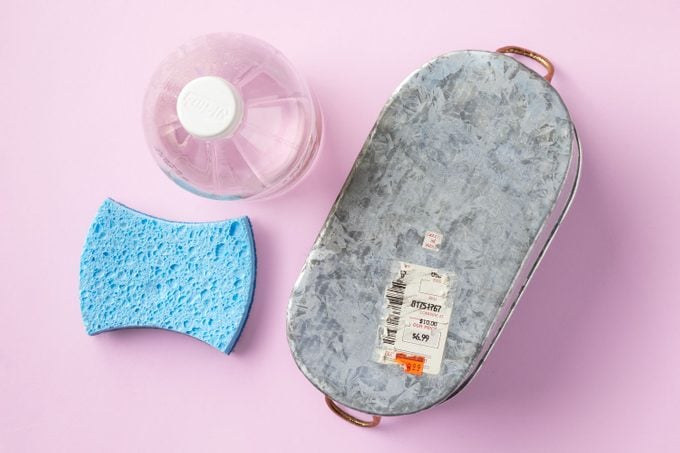
Is there anything this versatile natural cleaner can’t do? Sheppard calls vinegar a “budget-friendly and eco-conscious solution” that “effortlessly breaks down adhesives.” Simply dab a cloth or sponge in vinegar, and gently rub away the residue. That’s it! Vinegar is safe for most surfaces and fabrics (test first), but it should not be used on stone countertops, particularly marble.
Tape
Yep, you can use an adhesive to remove one! According to the adhesive experts at 3M, blue painter’s tape or other high-quality masking tape can be used to remove adhesives from hard surfaces. Apply tape to the sticky residue, then press down firmly to bond the tape to the residue. Peel back slowly and at a low angle for best results.
Goof Off
Sticker residue still stuck? “If none of the household options work, a commercial cleaner can be used,” Deonarain says. Start with Goof Off, Sheppard’s personal favorite. According to Sheppard, this orange-scented, citrus-powered formula is a “miracle worker” that “effortlessly removes sticker residue from various surfaces without leaving behind a greasy aftermath.” Goof Off and similar products like Goo Gone can be used on glass, metal, wood, concrete and some plastics. Deonarain says it’s important to follow the instructions for use and surface care.
WD-40
WD-40 is a penetrating oil that has an almost endless number of uses—including removing sticky adhesives. It’s a strong-smelling petroleum distillate, so keep this in mind if you’re debating using it in your house or garage. Open windows and cover surrounding surfaces that you don’t want sprayed accidentally, then spray on and wipe off.
Paint thinner
A bit of heavy-duty paint thinner will dissolve adhesive when nothing else can. It’s one of the more aggressive options on this list, according to Deonarain, and should probably be a last resort. And never use paint thinner on painted walls or varnished, painted or lacquered wood. You’ll also want to protect yourself by wearing personal protective equipment, including eye protection and gloves, when applying it.
So how do you apply it? After testing the surface for safety with paint thinner, dab it on the sticky residue with a cotton cloth, and rub the sticker away.
How to get sticker residue off glass
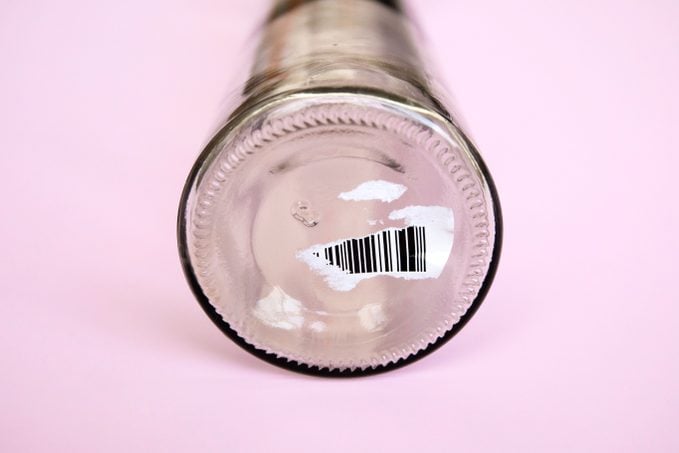
Glass is one of the easiest materials when it comes to removing sticker residue. There’s really nothing that can harm it, but for ease and safety, always start with the least aggressive methods to remove stickers and move up from there. Soak the glass in hot soapy water, or spray with a vinegar and water solution (which is one of the best ways to remove hard-water stains from glass too). Scrape with a plastic scraper, and apply heat from a hair-dryer. Finally, move on to Goo Gone or stronger solvents for sticker residue that just won’t budge.
How to get sticky residue off plastic
You’ll need to be a little more careful when attempting to get sticker residue off plastic, since stronger options, including acetone or rubbing alcohol, can damage it. Even too much heat from a hair-dryer could damage weaker plastics. Instead, start with warm soapy water or vinegar. If that doesn’t work, opt for toothpaste, peanut butter or mineral oil—and put in some elbow grease—until the sticker residue is completely off.
How to get stickers off wood
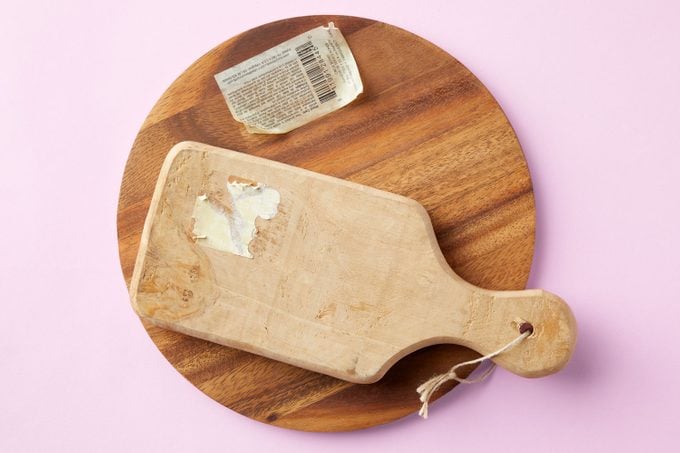
How to get stickers off wood depends on the type of wood in question. Unfinished wood can handle the big guns—acetone, rubbing alcohol and even paint thinner—but these strong solvents could strip the finish off painted, varnished or lacquered wood. Start with gentle, universal methods like heat, which work on either type of wood. Warm the sticker residue with a blow-dryer, and scrape with a plastic scraper.
If that doesn’t do it, oils and peanut butter can be used on finished woods, as can some commercial adhesive removers. Don’t use water-based cleaners, oils or bleaching toothpastes on unfinished, absorbent wood. Instead, go for the stronger solvents, which quickly evaporate.
How to get sticker residue off clothes
To loosen the grip of stickers that get embedded in the fibers of your clothes, try heat. First, remove as much of the sticker as you can with your fingernail and a hair-dryer. Then, if your clothing is washable, soak the sticker residue in hot soapy water or rub it with vinegar. (Vinegar also removes coffee stains.) Acetone and rubbing alcohol can often safely remove sticker residue from clothing, but test an inconspicuous area first.
Why trust us
At Reader’s Digest, we’re committed to producing high-quality content by writers with expertise and experience in their field in consultation with relevant, qualified experts. For this piece, Ally Childress tapped her experience as a home and cleaning writer, and then Ann Russell, TikTok’s “cleaning auntie” and the author of How to Clean Everything, gave it a rigorous review to ensure that all information is accurate and offers the best possible advice to readers. We also relied on reputable primary sources, including government and professional organizations and academic institutions, as well as our writers’ personal experience. We verified all facts and data and backed them with credible sourcing, and we will revisit them over time to ensure they remain accurate and up to date. Read more about our team, our contributors and our editorial policies.
Sources:
- Dan Deonarain, owner of Galaxy Maids; email interview, Jan. 4, 2024
- Mattie Sheppard, strategic interior design and cleaning advisor at Real Estate Bees and founder of Perfectly Pictured Decluttering and Staging Experts; email interview, Jan. 8, 2024
- Dry Cleaning and Laundry Institute International: “Acetone”

